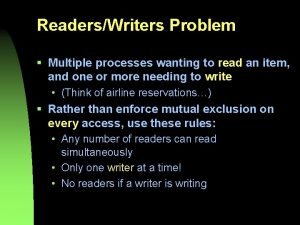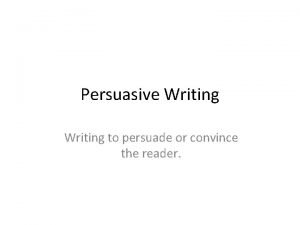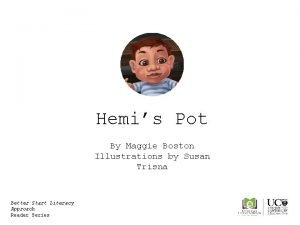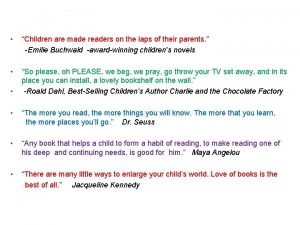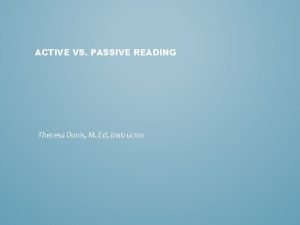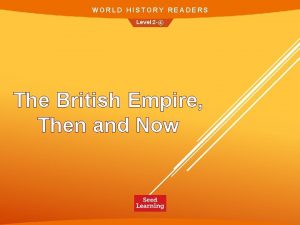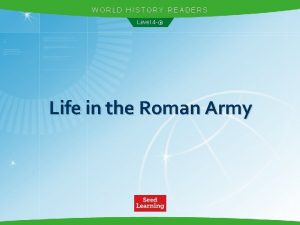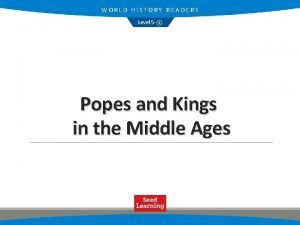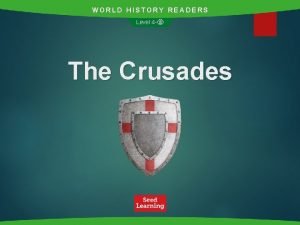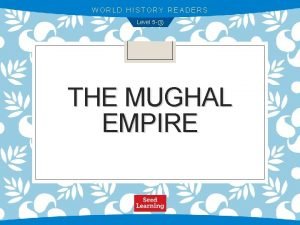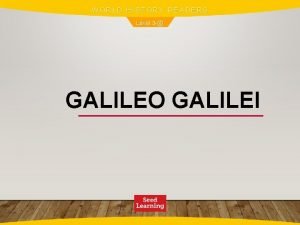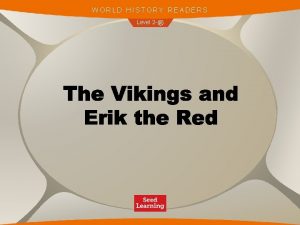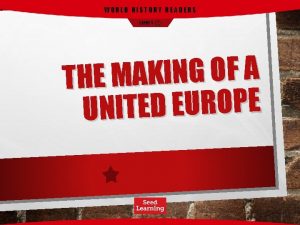WORLD HISTORY READERS Level 2 The History of













- Slides: 13

WORLD HISTORY READERS Level 2 -❾ The History of Printing

Early Writing Systems q What was one of the first ways people recorded information to share with others? People drew pictures or used their handprints to record information. q What was the problem with this way of recording information? People could not share knowledge widely as the information was only in one place. People needed a way to make copies of things and share them.

The First Stamps q What kind of information could be shared through stamps? Stamps were used for art, to write messages, and to put names on things. These stamps could put patterns on clothes and print pictures and designs. Wooden stamps for clothes A name stamp Indian stamp designs

Wood Blocks q How were stamps called blocks used for printing? The Chinese made many small wooden blocks to print Chinese writing. By using one block for each character, they could use the same blocks again and again. Also in 1234, the Koreans began to make many small metal blocks for printing.

The First Printing Press q Have you heard about Johannes Gutenberg? He was the person who made the first movable metal block printing press in 1450. It was called a “press” because it pushed the paper very hard onto the letter blocks. Gutenberg’s press q How did this printing press change printing in Germany? It made a very good print and was much faster than writing or printing by hand.

The Printer’s Job q What was the process for using the Gutenberg printing press? ① Arrange the metal letter blocks into words and sentences. ② Put ink on the blocks. ③ Put a piece of paper on top of the blocks. ④ Use the machine to press the paper against the blocks. The final product

The Power of Steam q Have you heard about Friedrich Koenig? In 1814, Friedrich Koenig, also from Germany, began selling steam-powered printing presses. Steam power turned the wheels of the printing press. q How was Friedrich Koenig’s printing press different from Gutenberg’s press? Gutenberg’s press vs Koenig’s steam press With steam power, the printing press could work much faster, allowing a person to print hundreds or thousands of copies in a few minutes.

After the First Printing Presses q What were some printing devices that followed the first printing presses? After the first printing presses were developed, there followed… § in the 19 th century, rolling printing presses for newspaper publishers § in the early 20 th century, mimeograph machines for making copies in offices § before 1940, the first photocopier § in 1968, the first dot matrix computer printers § today, laser printers for home use and “on-demand” printers in some bookstores

3 D Printing Today q What can 3 D printers do? 3 D printers are machines that print objects. Instead of ink, they can print with plastic, metal, glass—even chocolate! 3 D printers are now making car parts, building materials, food—even bones and body parts. The International Space Station is using 3 D printing technology for research and to make things needed on the space station. Someday, we may use 3 D printing to make a base on the moon or Mars!

Vocabulary ü liquid n. a substance, like water, that is not solid and you can pour easily ü steam n. the gas that comes from heating water

Vocabulary ü laser n. a high power light that can be used for printing ü stamp n. a tool, often a carved block, for putting a special ink mark on something

Vocabulary ü newspaper n. a publication consisting of a number of large sheets of folded paper ü photocopier n. a machine that makes copies of papers with writing on them by photographing them

Vocabulary ü metal n. a hard substance such as iron, steel, or gold ü storyteller n. someone who tells stories
 Slidetodoc.com
Slidetodoc.com Ap world history chapter 25 africa and the atlantic world
Ap world history chapter 25 africa and the atlantic world Dangerous world tour setlist
Dangerous world tour setlist Kinds of reading skills
Kinds of reading skills Readers writers problem
Readers writers problem To convince the reader
To convince the reader Good readers make predictions by
Good readers make predictions by Maggie boston readers
Maggie boston readers Korean graded readers
Korean graded readers Appeals in persuasive writing
Appeals in persuasive writing Vivid readers
Vivid readers Reading strategy synthesizing
Reading strategy synthesizing Children are made readers on the laps of their parents
Children are made readers on the laps of their parents Active and passive reading
Active and passive reading




